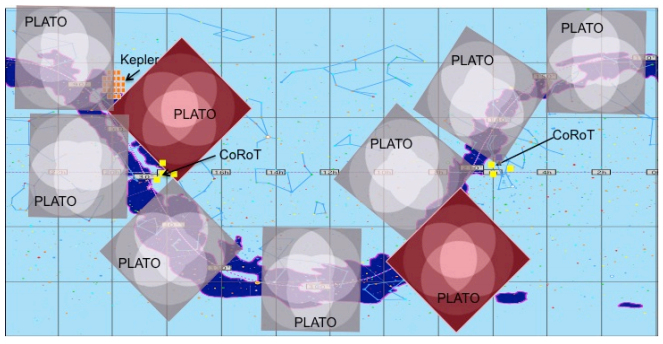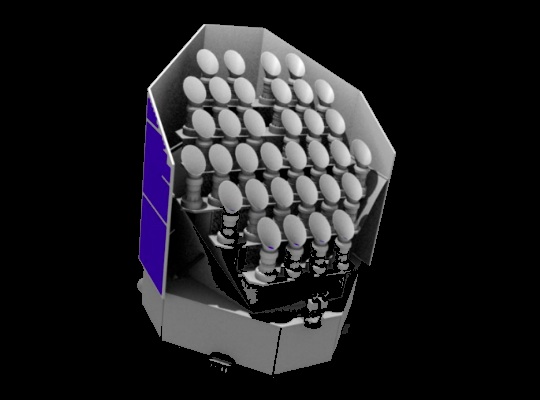PLATO 2.0
PLAnetary Transits and Oscillations of stars
Mission Overview
PLATO 2.0 is the third medium-class mission in ESA's Cosmic Vision Program and its launch is foreseen by 2022-2024.
The main scientific objective of the mission is the discovery and characterization of extrasolar planetary systems.
It addresses fundamental questions like:
- How do planets and planetary systems form and evolve?
- Is our Solar System special? Are there other systems like ours?
- What makes planets habitable?
- Is the Earth unique or can life also develop elsewhere?
PLATO 2.0 will observe up to 1,000,000 stars and it will detect and characterize hundreds of small planets and thousands of giant planets, performing for each of them accurate measurements of radius, mass, mean density and age.
The final catalog will include Earth-like, potentially habitable planets.
The planetary science will be complemented by a huge impact on stellar and galactic science via asteroseismology as well as light curves of many different objects on the sky: not only all kinds of variable stars, but also extragalactic sources like AGN and blazars.
Together with the results of the Gaia mission (see http://gaia.ssdc.asi.it) the outcomes of PLATO 2.0 will provide a huge legacy to planetary, stellar, galactic and extragalactic science.
The mission will have a nominal lifetime of six years, operations will be divided in 2 phases (see figure 1):
- Long duration phase: PLATO 2.0 will observe two huge fields (2232 deg2) close to the galactic plane, the first field will be observed continuously for 2-3 years, the second for 2 years.
- Step and Stare phase: several other fields will be monitored for a period of several months each.

Fig.1: PLATO pointings, in red the long duration fields.
For more details:
PLATO 2.0 on ESA website: http://sci.esa.int/plato/
PLATO 2.0 on INAF-OACT website: http://www.oact.inaf.it/plato/PPLC/Home.html
SSDC contribution
SSDC is the Italian data center of the PLATO mission, one of the six Data Processing Centers planned by the PLATO Data Center management.
The number of stars that Plato can follow will be limited by telemetry bandwidth, and is considerably smaller than the total number of stars in Plato's field of view, therefore the selection of the optimal targets (i.e. the preparation on the Plato Input Catalogue) is a fundamental task for the mission.
The implementation of Plato Input Catalogue is developed and managed at the SSDC, in close collaboration with the Target/Field Characterization team (leader G.Piotto), SSDC has the responsibility for the delivery to the Plato Main Database and for the maintenance and update of the final input catalogue.
Starting from Gaia data (SSDC is a partner data center for the Gaia catalog access, see http://gaia.ssdc.asi.it), the PLATO SSDC team, with the scientific input of the Target/Field Characterization team, will cross-match the Gaia catalog with several optical, infrared, UV and X-ray catalogs to obtain a large sample of fully characterized stars. This elaborate work will finally converge on the production of the Plato Input Catalog.



